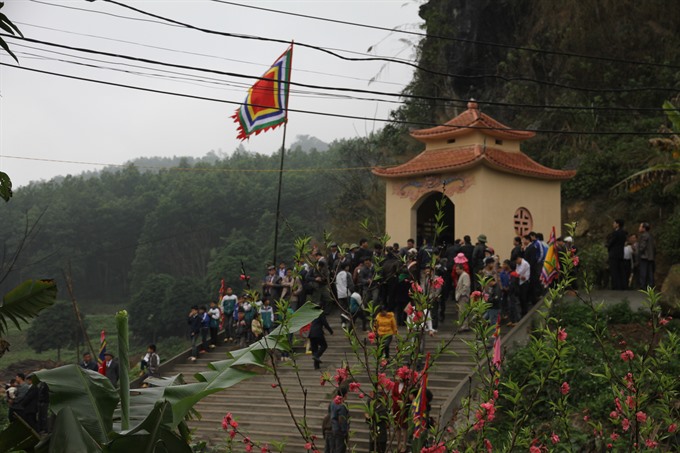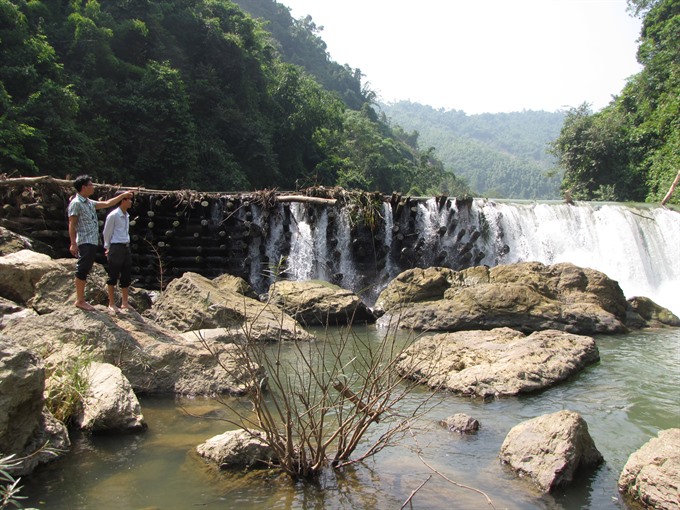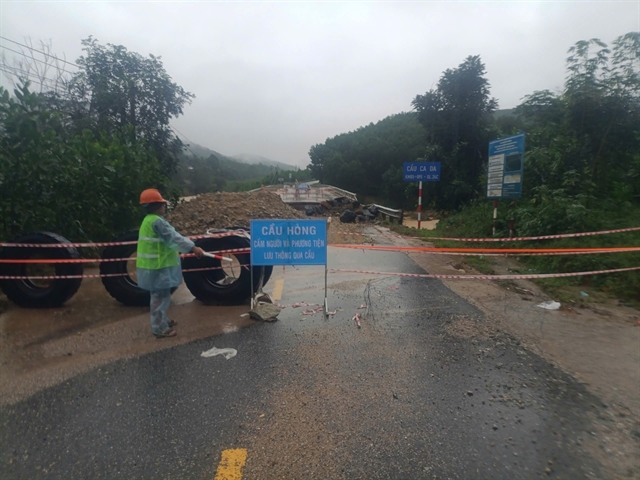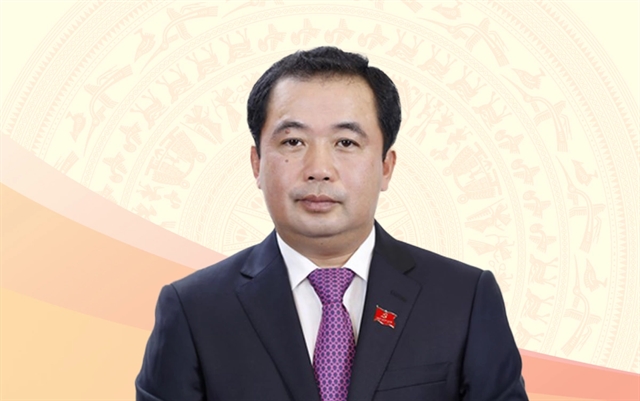 Travel
Travel

Writer Nguyễn Văn Toại is a relative of mine and his native village of Thu Cúc, in the northern province of Phú Thọ’s Tân Sơn District, is one of the most beautiful locations in the country because of its untouched forests and wild natural landscapes.
 |
| Sacred space: A temple built to worship Thu Cúc, a Mường girl who brought new rice to her village. — VNS Photo Đình Vũ |
By Duy An
Writer Nguyễn Văn Toại, a relative of mine, says his native village of Thu Cúc, in the northern province of Phú Thọ’s Tân Sơn District, is one of the most beautiful locations in the country because of its untouched forests and wild natural landscapes.
He can’t help but praise the stunning scenery every time we meet. Last week he invited my family to visit his hometown. I jumped at the chance to breathe some fresh air and set off to the countryside.
Just 130 kilometres from Hà Nội, the hamlets of Soi and Ú appear among the green fields, their distinctive palm-leaf roofs are particular to the Mường ethnic group. The landscape opened up in front of my eyes, with fresh fields stretching to the Bứa River and hundred-year-old trees standing proud along the road.
Toại told us that the river was full of fish, saying that when he was little, his father often grilled the fish straight from his net. “Oh, it was so fattysweet and fragrant. I haven’t eaten fish that fresh since.”
When we arrived at the hamlet of Ú, Toại explained that it’s the most remote part of Thu Cúc Village. Nevertheless, we wanted to see the Ú Dam, which is an wooden structure built in the 1960s on the Bứa River. Water wheels work all day and night to bring water to the fields.
“The Mường ethnic group earn a living from wet rice, so the dam plays an important role in bringing water for the rice fields. During hot days in summer, local people often visit the dam and spots along the Bứa River to enjoy fresh air and cool water,” said Toại.
My two sons raced out of the car and towards the dam, intending to wade across the dam, but Toại told them it would be dangerous. The boys settled for a seat on the bank, dipping their feet in the stream. “It’s very cool, mother. Please let us get in the water, don’t worry I know how to swim,” my older son insisted.
Toại promised that he would take the boys down the river on a bamboo raft.
In the afternoon, Toại took us to his parents’ home, which is now owned by his 80-year-old aunt, Nguyễn Thị Ngò. We immediately felt at home in the palm-roofed house. We were welcomed not only by the aunt but also by a dozen neighbours who were happy to receive visitors.
Soon it was time for lunch, and aunt Ngò invited us to enjoy some of her food. The spread of traditional foods was delicious, and even with little appetite I enjoyed tasting the fermented cassava leaves, steamed snails gathered from the stream, and grilled goby marinated in spices.
Even my sons, usually wary of strange foods, enjoyed the dishes here, saying they particularly liked the steamed snails which were crispy, tasty and very fresh.
Ngò said these foods are specialties of Thu Cúc Village.
After the meal, Ngò led us to Cúc Temple to worship the Mường girl name Cúc.
Legend has it that a group of Mường people from Hòa Bình Province, travelling to find a place to live, discovered Thu Cúc, a fertile piece of land. They decided to stop and settle right here.
However, several years later, the villagers found themselves struggling with prolonged drought. “No trees or livestock could be raised and the people suffered,” Ngò told us.
At that time, there had a beautiful and intelligent girl named Cúc. She had a lot of farming experience and was ready to help others. Seeing her neighbours suffering with hunger and poverty, Cúc wandered up hills and down the valleys to find a rice seed to rescue her fellow villagers.
She managed to overcome many dangerous situations, such as crossing deep streams and thick jungles, but when she found the rice seeds and started making her way home she was killed by a wild animal, leaving the rice seeds which her villagers later brought home to grow in their field.
Thanks to Cúc, local people’s living standards started to improve day by day.
Villagers built a temple in the area where she died, in order to remember her sacrifice and worship her.
Every year on the seventh and eighth days of the first Lunar month, Thu Cúc villagers begin a festival to welcome the soul of the rice to the village, wishing for good health and bumper crops all year round. They bring new rice and specialties for the gathering and perform rituals for the girl, said Ngò, adding that after the rituals have been completed, the villagers begin growing rice in the field.
Sorcerer Hoàng Văn Tạ said the people who join the festival and the welcoming of the rice’s soul should be supported by Cúc. “They will have full baskets of rice and maize for themselves and their livestock breeding too.”
“I myself regularly join the traditional sacred festival. Tạ is right, now no one in my village faces hunger or poverty,” said Hà Mạnh Hùng, deputy chairman of Thu Cúc Commune’s People’s Committee. — VNS
 |
| Cooling off: Ú Dam is made out of wood and attracts many visitors. — VNS Photo Vĩnh Hà |
(1)83342932PM.jpg) |
| Peaceful water: A beautiful afternoon on the Bứa River. — VNS Photo Vũ Hậu |
79542914PM.JPG) |
| Water of life: Water wheels bring water year round to the fields around Thu Cúc. — VNS Photo Đình Vũ |




